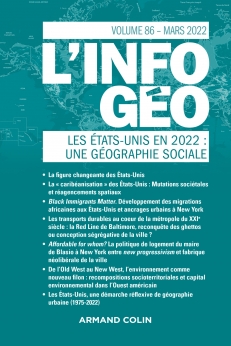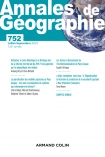
L'INFORMATION GÉOGRAPHIQUE (1/2022)
Pour acheter ce numéro, contactez-nous
Recevez les numéros de l'année en cours et accédez à l'intégralité des articles en ligne.
La lecture spatiale proposée vise à revenir aux fondements géopolitiques et historiques de la présence caribéenne aux États-Unis pour comprendre comment elle a contribué à diversifier la population du pays et à rendre plus complexe sa société. Dans un premier temps, la genèse du système migratoire caribéen aux États-Unis est analysée dans son contexte géopolitique et son cadre spatial à la fois transnational et métropolitain. Ensuite, l’article analyse la pluralité des schémas socio-spatiaux que les immigrations caribéennes donnent à voir, et qui traduisent la diversité des contextes régionaux et urbains nord-américains. Enfin, la réflexion interroge le potentiel de remise en cause des catégories ethno-raciales classiques étasuniennes par les présences caribéennes.
The proposed spatial approach aims at coming back to the geopolitical and historical foundations of the Caribbean presence in the United States as a way to understand its contribution to the diversity of the country’s population and to the complexity of its society. First, the genesis of the Caribbean migration system in the US is analyzed through the migration legislation and the metropolitan and transnational patterns of the system. Then, the analysis considers how the diverse Caribbean immigrations display a variety of sociospatial schemes that expresses the singularity of regional and urban North American contexts. Finally, the paper addresses the potential for US ethnic and racial categories to be challenged by the Caribbean presences.

